Gum Arabic Printing
This is a printing process which uses black and white photocopies as paper printing plates. It is sometimes called paper lithography as it resembles traditional lithography in many ways. However as paper plates are used it is fairly straight forward to produce short runs of a particular image.
An inherent aspect of this printing process is that it is almost impossible to get two prints exactly the same, so short "varied editions" are usually produced. Another aspect is that there is usually a pale tonal background colour as a result of some ink remaining in the "white" areas.
1 The photocopy is soaked with gum arabic solution, which is a natural gum from the acacia tree.
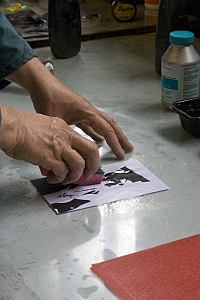
2 An oil-based printing ink is rollered over the photocopy.
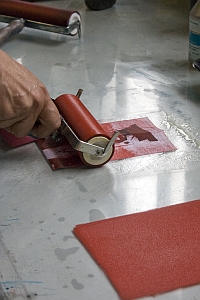
3 The white areas can be cleaned with more gum arabic solution
while ink remains in the black areas of the photocopy.
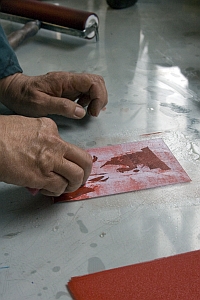
4 The paper plate is carefully placed on to the printing paper.

5 Everything passes through the etching press.
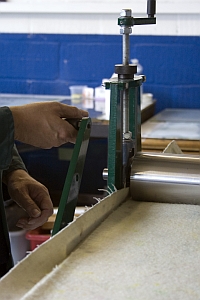
6 The plate is carefully removed to reveal the image.
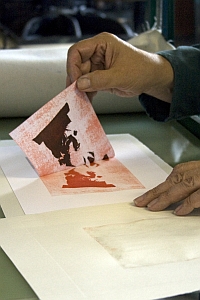
For two colour prints this process is repeated with a second plate.